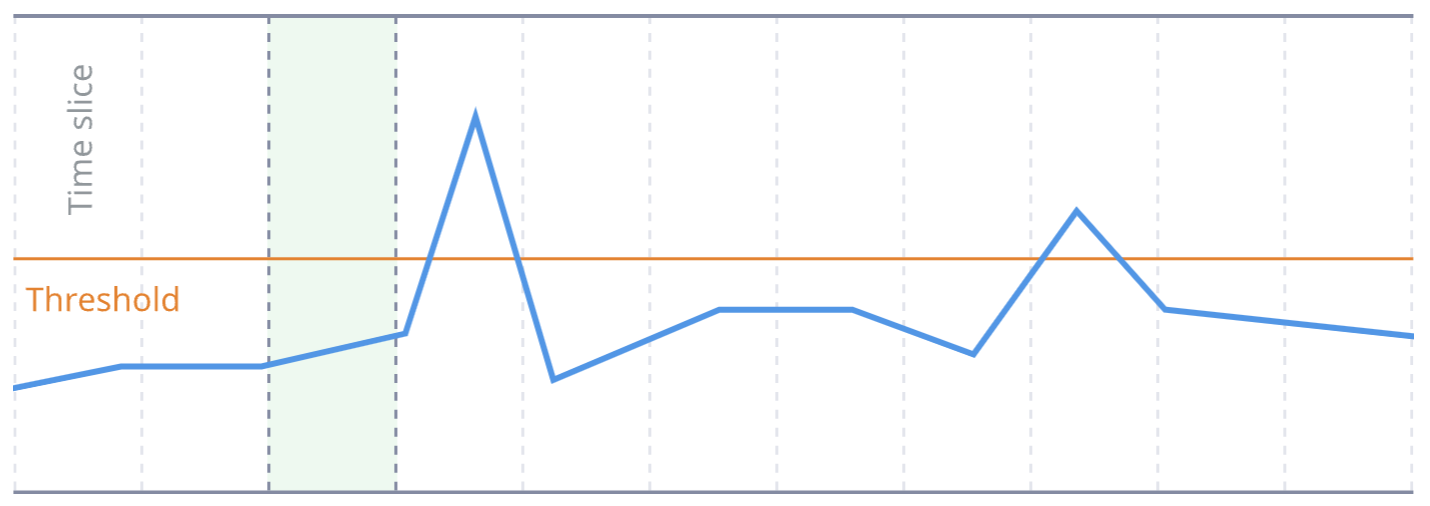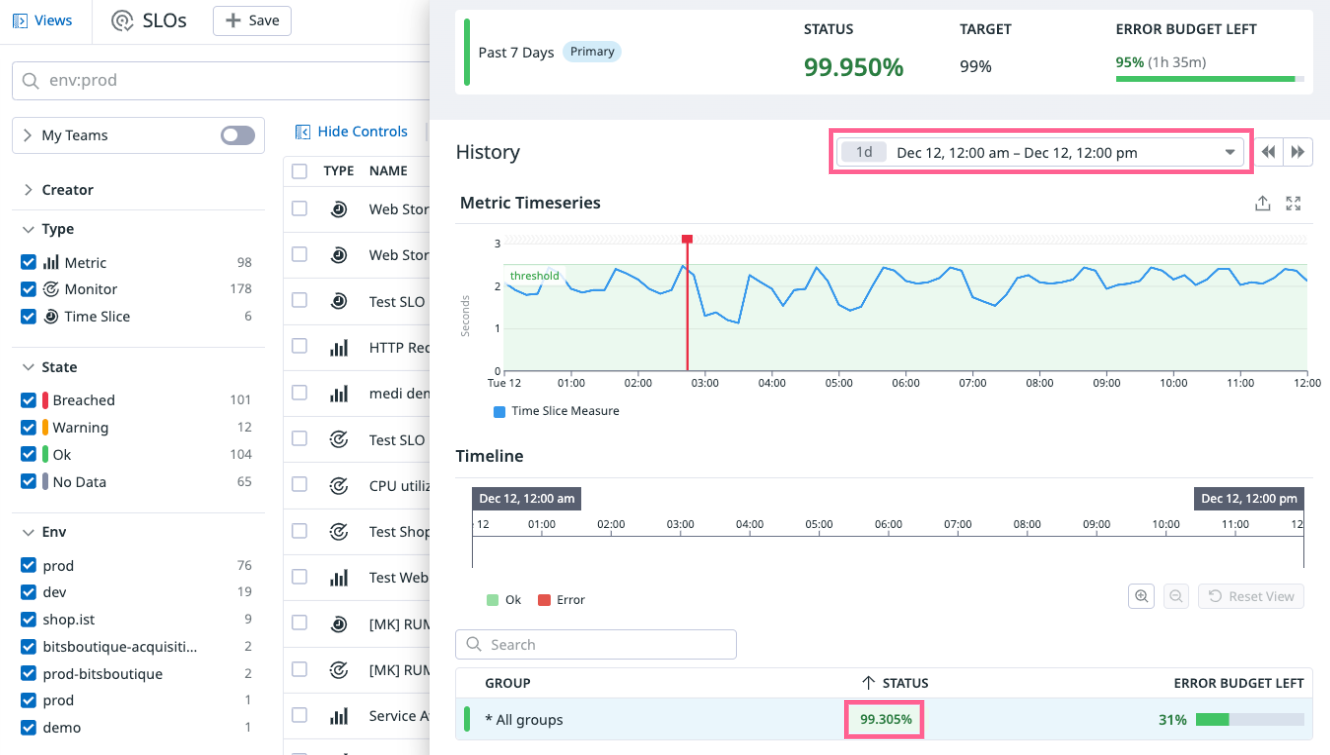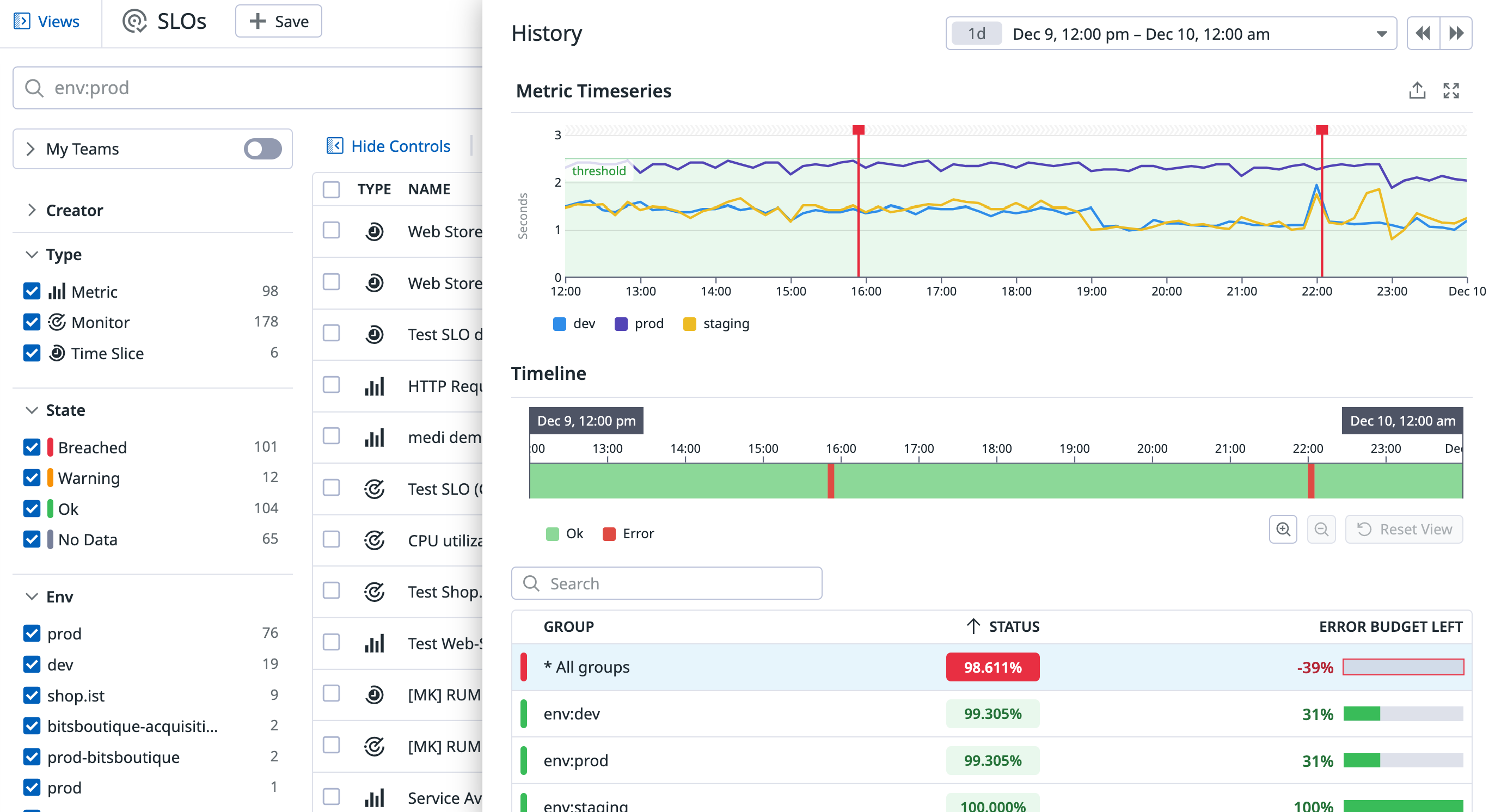- Esenciales
- Empezando
- Datadog
- Sitio web de Datadog
- DevSecOps
- Serverless para Lambda AWS
- Agent
- Integraciones
- Contenedores
- Dashboards
- Monitores
- Logs
- Rastreo de APM
- Generador de perfiles
- Etiquetas (tags)
- API
- Catálogo de servicios
- Session Replay
- Continuous Testing
- Monitorización Synthetic
- Gestión de incidencias
- Monitorización de bases de datos
- Cloud Security Management
- Cloud SIEM
- Application Security Management
- Workflow Automation
- CI Visibility
- Test Visibility
- Intelligent Test Runner
- Análisis de código
- Centro de aprendizaje
- Compatibilidad
- Glosario
- Atributos estándar
- Guías
- Agent
- Uso básico del Agent
- Arquitectura
- IoT
- Plataformas compatibles
- Recopilación de logs
- Configuración
- Configuración remota
- Automatización de flotas
- Actualizar el Agent
- Solucionar problemas
- Detección de nombres de host en contenedores
- Modo de depuración
- Flare del Agent
- Estado del check del Agent
- Problemas de NTP
- Problemas de permisos
- Problemas de integraciones
- Problemas del sitio
- Problemas de Autodiscovery
- Problemas de contenedores de Windows
- Configuración del tiempo de ejecución del Agent
- Consumo elevado de memoria o CPU
- Guías
- Seguridad de datos
- Integraciones
- OpenTelemetry
- Desarrolladores
- Autorización
- DogStatsD
- Checks personalizados
- Integraciones
- Crear una integración basada en el Agent
- Crear una integración API
- Crear un pipeline de logs
- Referencia de activos de integración
- Crear una oferta de mercado
- Crear un cuadro
- Crear un dashboard de integración
- Crear un monitor recomendado
- Crear una regla de detección Cloud SIEM
- OAuth para integraciones
- Instalar la herramienta de desarrollo de integraciones del Agente
- Checks de servicio
- Complementos de IDE
- Comunidad
- Guías
- API
- Aplicación móvil de Datadog
- CoScreen
- Cloudcraft
- En la aplicación
- Dashboards
- Notebooks
- Editor DDSQL
- Hojas
- Monitores y alertas
- Infraestructura
- Métricas
- Watchdog
- Bits AI
- Catálogo de servicios
- Catálogo de APIs
- Error Tracking
- Gestión de servicios
- Objetivos de nivel de servicio (SLOs)
- Gestión de incidentes
- De guardia
- Gestión de eventos
- Gestión de casos
- Workflow Automation
- App Builder
- Infraestructura
- Universal Service Monitoring
- Contenedores
- Serverless
- Monitorización de red
- Coste de la nube
- Rendimiento de las aplicaciones
- APM
- Términos y conceptos de APM
- Instrumentación de aplicación
- Recopilación de métricas de APM
- Configuración de pipelines de trazas
- Correlacionar trazas (traces) y otros datos de telemetría
- Trace Explorer
- Observabilidad del servicio
- Instrumentación dinámica
- Error Tracking
- Seguridad de los datos
- Guías
- Solucionar problemas
- Continuous Profiler
- Database Monitoring
- Gastos generales de integración del Agent
- Arquitecturas de configuración
- Configuración de Postgres
- Configuración de MySQL
- Configuración de SQL Server
- Configuración de Oracle
- Configuración de MongoDB
- Conexión de DBM y trazas
- Datos recopilados
- Explorar hosts de bases de datos
- Explorar métricas de consultas
- Explorar ejemplos de consulta
- Solucionar problemas
- Guías
- Data Streams Monitoring
- Data Jobs Monitoring
- Experiencia digital
- Real User Monitoring
- Monitorización del navegador
- Configuración
- Configuración avanzada
- Datos recopilados
- Monitorización del rendimiento de páginas
- Monitorización de signos vitales de rendimiento
- Monitorización del rendimiento de recursos
- Recopilación de errores del navegador
- Rastrear las acciones de los usuarios
- Señales de frustración
- Error Tracking
- Solucionar problemas
- Monitorización de móviles y TV
- Plataforma
- Session Replay
- Exploración de datos de RUM
- Feature Flag Tracking
- Error Tracking
- Guías
- Seguridad de los datos
- Monitorización del navegador
- Análisis de productos
- Pruebas y monitorización de Synthetics
- Continuous Testing
- Entrega de software
- CI Visibility
- CD Visibility
- Test Visibility
- Configuración
- Tests en contenedores
- Búsqueda y gestión
- Explorador
- Monitores
- Flujos de trabajo de desarrolladores
- Cobertura de código
- Instrumentar tests de navegador con RUM
- Instrumentar tests de Swift con RUM
- Detección temprana de defectos
- Reintentos automáticos de tests
- Correlacionar logs y tests
- Guías
- Solucionar problemas
- Intelligent Test Runner
- Code Analysis
- Quality Gates
- Métricas de DORA
- Seguridad
- Información general de seguridad
- Cloud SIEM
- Cloud Security Management
- Application Security Management
- Observabilidad de la IA
- Log Management
- Observability Pipelines
- Gestión de logs
- Administración
- Gestión de cuentas
- Seguridad de los datos
- Sensitive Data Scanner
- Ayuda
Time Slice SLOs
This page is not yet available in Spanish. We are working on its translation.
If you have any questions or feedback about our current translation project, feel free to reach out to us!
If you have any questions or feedback about our current translation project, feel free to reach out to us!
Overview
Time Slice SLOs allow you to measure reliability using a custom definition of uptime. You define uptime as a condition over a metric timeseries. For example, you can create a latency SLO by defining uptime as whenever p95 latency is less than 1 second.
Time Slice SLOs are a convenient alternative to Monitor-based SLOs. You can create an uptime SLO without going through a monitor, so you don’t have to create and maintain both a monitor and an SLO.
Create a Time Slice SLO
You can create a Time Slice SLO through the following ways:
Create an SLO from the create page
- Navigate to Service Management > SLOs.
- Click + New SLO to open up the Create SLO page.
- Select By Time Slices to define your SLO measurement.
- Define your uptime condition by choosing a metric query, comparator and threshold. For example, to define uptime as whenever p95 latency is less than 1s. Alternatively, you can import the uptime from a monitor.
- Configure your SLO to use 1 or 5 minute time slices to calculate uptime.
- Choose your timeframe and target
- Name and tag your SLO.
- Click Create.
Export an existing monitor SLO
Only single metric monitor-based SLOs can be exported. SLOs based on non-metric monitors or multiple monitors cannot be exported.
Create a Time Slice SLO by exporting an existing Monitor-based SLO. From a monitor SLO, click Export to Time Slice SLO.
Import from a monitor
Only metric monitor SLOs appear in the monitor selection for import.
From the Create or Edit SLO page, under Define your SLI, click Import from Monitor and select from the dropdown or search in the monitor selector.
Note: Time Slice SLOs do not support rolling periods. Rolling periods do not transfer from a monitor query to a Time Slice query.
Uptime calculations
To calculate the uptime percentage for a Time Slice SLOs, Datadog cuts the timeseries into equal-duration intervals, called “slices”. The length of the interval configurable with options of 1 or 5 minutes:
The space and time aggregation are determined by the metric query. For more information on time and space aggregation, see the metrics documentation.
For each slice, there is a single value for the timeseries, and the uptime condition (such as value < 1) is evaluated for each slice. If the condition is met, the slice is considered uptime:
Otherwise, it is considered downtime:
In the example below, there is a Time Slice SLO configured with 5-minute time slices, and exactly one point in the timeseries violates the uptime condition. In this case, the condition is that the p95 latency is less than or equal to 2.5 seconds. Since the total time period shown is 12 hours (720 minutes), and 715 minutes are considered uptime (720 min total time - 5 min downtime), the uptime percentage is 715/720 * 100 = 99.305%
Groups and overall uptime
Time Slice SLOs allow you to track uptime for individual groups, where groups are defined in the “group by” portion of the metric query.
When groups are present, uptime is calculated for each individual group. However, overall uptime works differently. In order to match existing monitor SLO functionality, Time Slice SLOs use the same definition of overall uptime. When all groups have uptime, it is considered overall uptime. Conversely, if any group has downtime, it is considered overall downtime. Overall uptime is always less than the uptime for any individual group.
In the example above, environment “prod” has 5 minutes of downtime over a 12 hour (720 minute) period, resulting in approximately 715/720 * 100 = 99.305% of uptime. Environment “dev” also had 5 minutes of downtime, resulting in the same uptime. This means that overall downtime–when either datacenter prod or dev had downtime–was 10 minutes (since there is no overlap), resulting in approximately (720-10)/720 * 100 = 98.611% uptime.
Corrections
Time Slice SLOs count correction periods as uptime in all calculations. Since the total time remains constant, the error budget is always a fixed amount of time as well. This is a significant simplification and improvement over how corrections are handled for monitor-based SLOs.
For monitor-based SLOs, corrections are periods that are removed from the calculation. If a one-day-long correction is added to a 7-day SLO, 1 hour of downtime counts as 0.7% instead of 0.6%:
$$ 60/8640 *100 = ~0.7% $$
The effects on error budget can be unusual. Removing time from an uptime SLO causes time dilation, where each minute of downtime represents a larger fraction of the total time.
Missing data
In Time Slice SLOs, missing data is always treated as uptime. While missing data is treated as uptime, it is gray on the timeline visualization.
Further Reading
Más enlaces, artículos y documentación útiles:








